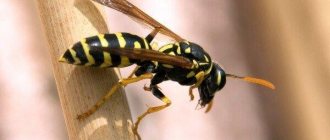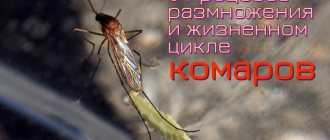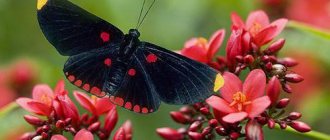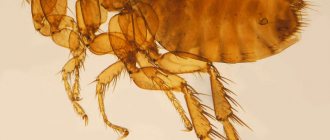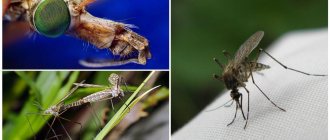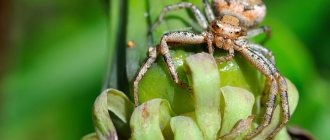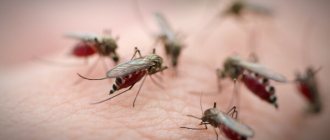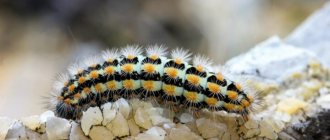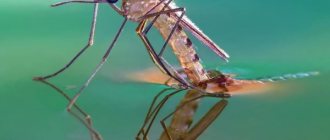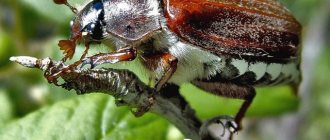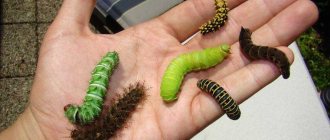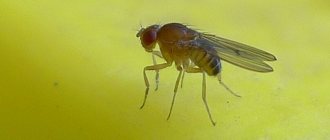You can easily find out what different types of wasps look like from biology textbooks and in other information publications, including on the Internet. Everyone knows the common wasp, because it differs from other insects in its yellow-black striped color, the presence of small mustaches and transparent wings. The common wasp often settles next to a person, on a personal plot or summer cottage. To do this, a colony of wasps builds their nests either in the ground, or in trees, or in the attics of outbuildings, etc. In fact, in nature there are many species of wasps that differ from each other both in body shape and in the characteristics of their life.
Species diversity
The varieties of these thin-waisted insects are surprising in their heterogeneity. After all, besides the classic striped wasp, which flies everywhere and doesn’t seem to be afraid of anyone, there are other species. Some of them are not very similar to their counterparts.
Wasps in Russia are no less diverse than similar insects in other regions. It is not possible to describe all types here, but typical and unusual types can be:
- Flower wasp. This solitary insect leads the lifestyle of a bee. Representatives of this group are very small in size - no more than 1 cm. This insect is colored like a typical black and yellow wasp. The flower wasp got its name because it feeds on pollen and nectar. She even has a long proboscis, which is so convenient for drinking nectar. However, this wasp does not carry pollen on legs, like bees, but in the crop.
- Sand wasps. These insects got their name based on their lifestyle. They dig their burrows in the ground, mostly sandy. All burrowing insects are characterized by the presence of a large head and hypertrophied jaws. Sand wasps are no exception. They look scary, but their danger to humans is not great. It is practically a black wasp and only the abdomen has yellow or grayish stripes. For their ability to deliver precise blows to an enemy larger than them, these wasps are commonly called cicada killers.
- German wasp, or German wasp. They are sometimes confused with ants because the female wasps do not have wings. Because of this terrestrial lifestyle, German women are sometimes called velvet ants. This name is due to the fact that the body of females is covered with hairs, which evokes an association with velvet. These wasps also differ in color - they are bright red with black spots. This is also a kind of warning coloring, because these insects also have poison. However, the male is predominantly black or brown with red spots. These wasps invade other people's burrows, laying their eggs there. The hatched larvae feed on the host's eggs. After leaving the nest, they drink nectar from flowers or juice from insect corpses. So the dark wasp on the flower is a male or a young female.
There is also a species called the wasp fly. In fact, it is really a fly, but it is colored like a wasp or a bee. This cunning fly can be distinguished by the absence of a thin waist. In addition, she has only two pairs of wings, which is a typical fly feature. So this fly does not have the structure of a wasp, it mimics only the color of its body.
Otherwise, this fly is called a hoverfly. This insect received this name for the characteristic murmuring sound made by its wings while hovering over a flower. These flies feed on pollen and nectar. They have no poison, but the birds don’t touch them because they don’t understand entomology at all. This wasp-like fly enjoys all the benefits of stinging insects, which is also beneficial for plants, since the hoverfly is a good pollinator.
How is it different from a bee?
Visually distinguishing a wasp and a bee is quite easy, you just have to take a closer look at the insects. Despite the fact that the color of the insects is similar, the color of the wasp is brighter and more contrasting. The bee against the background of the wasp looks more faded, and the pattern on the body is more blurred and smeared. The body of the bee is stockier, there is no “wasp waist”. In addition, there is much more hair on the body of a bee.
wasp sting
In addition to appearance, insects have other differences:
- The bee has a jagged sting, while the wasp has a smooth one, so that it can use it repeatedly without harm to itself;
- bees eat pollen, nectar and honey, the wasp's diet is much more varied;
- bees are usually smaller in size.
Bees are calmer insects, while wasps are annoying and aggressive.
Where does the wasp live?
Representatives of wasps are widespread throughout the world. They can easily be found in Belarus, Russia, Ukraine, Europe, Africa, Argentina, Canada, Mexico, Australia, China, Japan. Such animals do not live only in the hot Sahara, the Arctic and the Arabian Peninsula. Wasps prefer a temperate climate and cannot exist in regions that are too hot or too frosty.
Interesting fact: A very dangerous species of wasp lives in Japan and China - the Asian hornet. Its size can reach six centimeters. One bite of such an insect is quite enough to kill a person, especially if he is allergic. According to statistics, up to fifty people die every year from the sting of the Asian hornet in these countries.
Most representatives of wasps live in the Northern Hemisphere. Only a small population can be found in Brazil. These insects choose their habitat according to several criteria: temperate climate, presence of trees, humans. The thing is that the human habitat makes it easier for wasps to get their food. The tree is used for building nests and raising larvae. Some individuals build homes from clay and pebbles. Their nests look very much like small castles.
Wasp self-defense
After a wasp sting, a person's skin swells.
To protect themselves, these insects use 2 methods. A passive defense is their bright colors, which repel lizards, birds and other small mammals. Enemies associate this color with unpleasant taste sensations, so after several attempts, they stop hunting wasps. And the second method of protection is active - the use of a sting. The sting is a curved tube without barbs, so when the wasp plunges its weapon under the skin of the enemy and injects poison, it does not die like a bee, but calmly removes the sting and can attack again.
What kind of homes do wasps have?
An example of a social wasp's nest is the home of hornets, the largest stinging insects of the suborder Stem-bellied. The whole process begins with one uterus. Its task is to create a small ball where nests could be made for several working individuals.
First, the uterus creates one layer, moving from the center to the periphery. Under this layer she makes a leg to which several cells are attached. Eggs are laid in each of them. After this, the queen builds several tiers until new workers appear from previously laid eggs. The more workers appear, the more extensive the wasp’s jaws create a paper ball, and the queen, meanwhile, is engaged in her direct function - reproduction.
In biology, this group includes all insects belonging to the order Hymenoptera and the suborder Stalk-bellied.
The nests of the solitary wasp are very diverse. Thanks to the research of the famous insect behaviorist Jean Henri Fabre, the life of the burrowing ground wasp became known not only to scientists. These predatory wasps inject a paralyzing injection into the nerve center of a large spider, drag the poor thing into a hole, and then lay eggs on it. Soon the larvae emerge from the eggs and begin to eat the spider alive.
The flower wasp builds its cells somewhere in secluded places. Pill wasps (aka pottery wasps) make nests from earth and clay. It looks like a bandoleer for 3-4 rounds, which is hidden in the forest canopy. However, pottery wasps get along well with humans, disguising their cartridge belt on the walls of houses and even inside a person’s home.
Some wasps dig small shelters in plant stems. Finally, there are species that do not burden themselves with any construction work at all. They simply use natural depressions as their humble home.
Varieties
There are a large number of wasp species. They may differ from each other in the degree of color, shade and even feeding habits. But there are two clear classifications: solitary and social.
The way of life depends on the names
Solitary wasps coexist with other individuals of their species only when they need fertilization. They can build nests, but feel comfortable in different burrows and depressions. Even the larvae of single species are laid so that they do not touch each other.
Social wasps. They live in a colony, which is founded by the queen. She lays the first generation, fattens it and raises it. Then a family appears, in which each individual occupies a certain place and has a certain role.
Nutrition
Wasps are predatory insects, although they are known to have a “sweet tooth.” You should not leave bowls of jam on the summer veranda after drinking tea; wasps will certainly discover this gift and fly here for a new portion. Wasps can lick nectar from flowers, or they can also snack on smaller insects.
And yet, one has only to remember the wasp-rider, and doubts about predation will disappear. This wasp looks for a well-fed caterpillar, sits astride it (like an equestrian), pierces the skin with its ovipositor and lays eggs in the body of the victim.
Later, the larvae will be provided with food, that is, this very caterpillar. Some wasps choose beetles instead of caterpillars. The Pepsis wasp (road wasp) even tracks spiders, attacking them, sometimes even in their own home, and lays its eggs in the body of this spider.
By the way, cicadas, which are larger than wasps, also feed the larvae. They are simply walled up in a cell with an egg and when the larva hatches, it will not starve.
Description
The wood wasp is a medium-sized insect; the length of the working wasp is 13-15 mm. The uterus grows to 18 mm. The color is bright, black and yellow. The color is predominantly black. The body is divided into 3 parts - head, chest and cone-shaped abdomen, between the latter there is a very thin transition. The head is black, lowered, with straight mustaches and powerful jaws. The wings are narrow and transparent. The insect uses a thin and straight sting for self-defense and to attack the victim.
Wasp life cycle, lifestyle
Everyone has encountered wasps at least once and is well aware of their aggressive nature. The insect, without hesitation, will attack first if it senses danger. Predators are capable of not only stinging, but also biting with their jaws, which in itself is less painful. The family also has a herd instinct. If there are wasps nearby that sense the poison, they will come to the rescue and help attack.
The entire short life cycle of insects can be divided into several stages:
- Birth and arrangement of the nest. With the arrival of warmth, the queen begins to nest to give life to a new generation;
- Reproduction. After laying eggs, fertile males and females emerge, ensuring further reproduction.
Every gardener, knowing why wasps are needed, will say that wasps only get in the way, because they spoil the fruit harvest, attack people and animals, and feed on the leftover sweet foods from the table. But they also destroy other pests that attack garden plots. In addition, they pollinate plants, which is also important.
Wasp control
Professional protection against wasps.
When wasps begin to bother people and cause harm, an active fight against them begins. But in this matter it is necessary to act clearly and wisely. Methods are selected according to where Hymenoptera are localized.
Personal protection and safety equipment is equally important. You will need to protect yourself, cats, dogs and even neighbors. Angry insects can be very dangerous.
Read the full guide to wasp control here.
Reproduction and lifespan
After a warm winter (a secluded place is specially located for this), the queen begins to build a nest and lay eggs there. From these eggs only sterile individuals will emerge, which will further build the nest and obtain food.
And only towards the end of summer the queen begins to lay eggs, from which wasps will emerge capable of reproducing. It is these individuals that swarm and mate with each other.
After fertilization has occurred, young females fly out of the nest and look for a warm shelter for the winter, so that in the spring they can build their own nest. The males die. With the onset of cold weather, the entire abandoned wasp family, along with the old female, dies.
One female mates once and is capable of producing more than 2000 wasps. For the most part, these are worker wasps, sterile. The eggs are sealed in a chamber along with small insects (food). The larvae will then feed and gain weight in order to turn into a wasp.
The larvae that will produce wasps capable of reproducing feed differently. They are fed food that promotes the formation of reproductive organs. After the wasp emerges from the larva, it climbs out of the chamber on its own. The queen is 10 months long, but worker wasps and drones are only 4 weeks old.
Lifestyle and habitat
Wasps are found in any area. These insects perhaps do not adapt to cold, unsuitable areas for existence. They always live close to humans, thereby providing themselves with constant food. Wide populations of wasps are present in almost all countries of Eurasia, North Africa, Australia, Mexico and Argentina. They are not found except in the Arctic and Antarctica, as well as in deserts.
Representatives of different species tend to build a social hierarchical system. Most wasps live in groups. Insects form close-knit colonies and conduct joint life activities. In some aspen families there are 15-20 thousand individuals. Each colony has a social structure that involves stratification into classes and the definition of responsibilities.
In addition to social ones, there are solitary individuals that do not depend on others and do not have a nest or swarm. These are predatory insects that catch beetles and spiders larger than themselves. They sting victims with their sting and release poison, after which they are paralyzed.
The predominant percentage of colony members are working wasps. They search for food for themselves and the larvae, and protect the nest from attack by other insects. Moreover, such individuals are quite aggressive. If they are slightly disturbed, they will immediately attack, and if they sense a real threat to their home, the entire swarm will fly out.
Larval development
The female lays each egg in a separate cell. After a few hours, a larva appears - a thick, legless white worm. Sedentary, absolutely unable to take care of herself. It feeds extremely actively and requires exclusively protein foods for development. After 14 days, the larva weaves a cocoon and closes the entrance to the cell. It stays in this state for about a week. Adult adults fly out from there and immediately begin to perform their duties.
Interesting!
In some families of wasps, young females help replenish the colony. They lay eggs, but do not claim to be the queen. However, in the event of the tragic death of the uterus, it is calmly replaced. In such a swarm, fertile females and males are born not only at the end of summer, but periodically throughout the season, ready to mate at any time. The wasp family is called Polista.
How a wasp feeds larvae is a very fascinating process. Chews the insect, forms small balls, and feeds it to the young.
Nest
Wood wasps live in the wild in broad-leaved forests, but are not averse to settling near a person’s house. The spherical nest in the form of a cocoon is attached to wooden buildings, trees, shrubs, and less often it is built in the ground. The average size of a wasp's house is no larger than that of an ordinary apple. Several dozen worker wasps live inside. In some cases, the family numbers hundreds of individuals; the nest size reaches 30 cm in diameter.
Human possessions entice forest wasps with an abundance of food, the absence of enemies, and many convenient places to build a nest.
- attic;
- roof;
- balcony;
- outbuildings;
- garden;
- vineyard;
- apiary;
- garages;
- walls with cracks.
Wood wasp nest
On a note!
Externally, the nest resembles rolled up sheets of toilet paper. Gray color, smooth surface. The entrance is located at the bottom. The family returns to the hive for the night and gets out at the first rays of the sun.
How a wasp breathes
In addition to food and water, air is needed to maintain life. The respiratory organs of wasps are a whole system of tubes and sacs. Scientists call them tracheas. Breathing is carried out through special spiracles located on the sides of the body. They are presented in the form of tubes, ending in special bags inside the body.
Numerous tubes extend from the air sacs, which support the functions of the internal organs. The insect can control the supply of oxygen during respiration using a closure valve. Thanks to it, dust and dirt do not get inside.
During the process of breathing, the wasp contracts the muscles of the abdomen and chest. Air enters the trachea and is pushed out. The number of breaths depends on the ambient temperature. The need for fresh oxygen is very great. The respiratory sacs are well developed in the queen, but most of all in drones.
Appearance and anatomy of a wasp
You can find out what this insect looks like from a biology textbook. Since it is impossible to tell everything about wasps in one article, we should focus on the most common species - the common wasp. These winged insects differ from their relatives in their striped colors.
The average body length of the insect is 2-3.5 cm. On the yellow-black back there are four wings, with a pair of hind wings linked to a pair of front wings, which is why it visually seems that there are only two wings.
Interestingly, the size of the wasp depends on the gender of the insect. Females are considered larger, and can reach 5.5 cm in length. Such individuals are found in warm countries with a tropical climate.
The system of visual organs in wasps is no less curious. They have not two, but five eyes, which allows them to get maximum visibility of their surroundings.
In addition to the visual system, multifunctional antennae are of great importance for the life of insects. They play the role of a kind of antennas, being at the same time organs of touch, smell, taste buds and a measuring device.
Interestingly, when building a nest, wasps measure each cell with their whiskers.
The internal structure of wasps is similar to bees. Both Hymenoptera have a sting in the lower part of their abdomen, a thin organ associated with a gland that produces toxic venom. Only females can sting, so males are generally considered harmless.
Nature endowed them with this ability so that they could protect themselves, their offspring and their nest from larger insects (for example, from a hornet).
Pests and enemies
Although insects have a sting, they are still often attacked by other insects, mammals and birds. Therefore, even they cannot fully protect themselves.
The most common enemies are:
- Ants. They eat weak and sick individuals.
- Fan beetle. It settles in the burrow of earthen species and lays eggs on the body of young wasps.
- Hornets. They are considered killer wasps. They are quite large and capable of ruining a family in one attack.
- Buzzard birds. They feed their chicks with larvae and adults.
- Bears, wolverines, hedgehogs. They calmly eat wasps, as they are not afraid of their bites.
The main threat to wasps is the reduction of suitable habitats. Deforestation and plowing of fields lead to the extinction of some species, so many countries carry out special environmental measures aimed at protecting them.
The main nuisance of wasps is their painful sting , which can lead to allergic reactions and anaphylactic shock, and the advantage is the protection of agricultural land from harmful insects that can destroy crops.
The benefits and harms of insects
The wasp itself is not at all dangerous to humans, however, as a result of an attack by a female, there is a risk of developing an allergic reaction.
A wasp sting is manifested by the following unpleasant symptoms:
- swelling;
- redness and inflammation of the skin;
- pain;
- itching;
- slight malaise;
- slight increase in body temperature.
If a wasp stings, urticaria may occur, and in difficult cases, Quincke's edema develops at lightning speed and anaphylactic shock occurs.
If a wasp stung for the first time, and everything ended well, this does not guarantee that a subsequent insect bite will pass without consequences. Wasp venom can accumulate in the body and cause sensitization. What to do if bitten by a wasp - first aid for a wasp sting.
These insects bring not only harm, but also benefit. They actively fight pests in greenhouses, vegetable gardens, and orchards. Some biologists argue that many people are unaware of the existence of certain species of spiders and beetles thanks to predators colored with black and yellow stripes.
In addition, today scientists continue to actively research the properties of wasp venom against cancer cells. It's all about the special structure of the protein it contains, supposedly this particular substance allows you to destroy malignant cells.
Features of character and lifestyle
Photo: Bumblebee Wasp
The lifestyle of this animal depends on the species. The life of solitary wasps can be called monotonous. They are actively engaged in preparing reserves for offspring. To do this, they place the paralyzed prey in the nest so that the larvae can feed on it. Further, the offspring will develop independently, without the help of their parents.
Social wasps live more interesting lives. In the spring, the queen looks for a place to create a “house”. There she lays eggs. When the larvae appear, the queen takes care of them. The first brood grows up over time and relieves its parent of worries. They take on all the responsibilities for obtaining food and building a house. The queen continues to increase the number of colonies.
There is an opinion that stinging insects spend the night sleeping. But that's not true! These animals never sleep. With the onset of darkness, their natural activity simply decreases. Wasps prefer to spend their nights in their nests, chewing bark. When morning comes, the adults begin building new honeycombs.
Interesting fact: The lifespan of males usually does not exceed two weeks. Male wasps die soon after mating.
The character of most representatives of this species is very bad. Wasps are not the first to attack without doing anything, but they will definitely sting if you disturb them even a little. In this case, the smell of the secreted poison can be smelled by relatives of the insect. Then the person or animal who disturbed the wasp will be in big trouble. Wasps can band together and face danger together.
What does a wasp eat?
Photo: Osa
The diet of representatives of the wasp species is quite varied. It depends on several factors: type of animal, stage of development, habitat. It may seem that these insects are not at all selective in food. They can eat sweets, fish, fruit, berries and even candy. However, this is not the main food of wasps, but only a pleasant addition to the diet.
Most species prefer soft, liquid food. They feed on the pulp of a variety of fruits, plant juice, berries and nectars. If the opportunity arises, the wasp will not mind eating a little jam, honey or sweet drink. Wasps have a very developed sense of smell. Therefore, they can easily find fermented or rotten fruits. They are also attracted by the pungent smell of beer and kvass. Wasps bring part of their prey to their offspring, the queen. This is what the workers do.
Predator wasps have a slightly different diet. They mainly eat insects: beetles, flies, cockroaches, small spiders. This is what they feed their offspring. The hunting process of a predator wasp is quite interesting. First she looks out for a potential victim, then suddenly attacks. The hymenoptera insect tries to insert its sting into its prey as quickly as possible in order to paralyze it. The poison helps keep the meat fresh.
Characteristic features of the OS
Wasps have two pairs of transparent wings, with the help of which they make swift and swift flights. They have 3 pairs of jointed legs with claws, with the help of which wasps cling to the surface. Wasps have complex compound eyes that provide them with excellent vision.
Common wasp: image in multiple magnification.
The mouthparts of wasps are very powerful - queens can crush wood with their jaws, from which they then build their nests. The nest is made of a paper-like material and is a system of cells in which eggs are laid.
